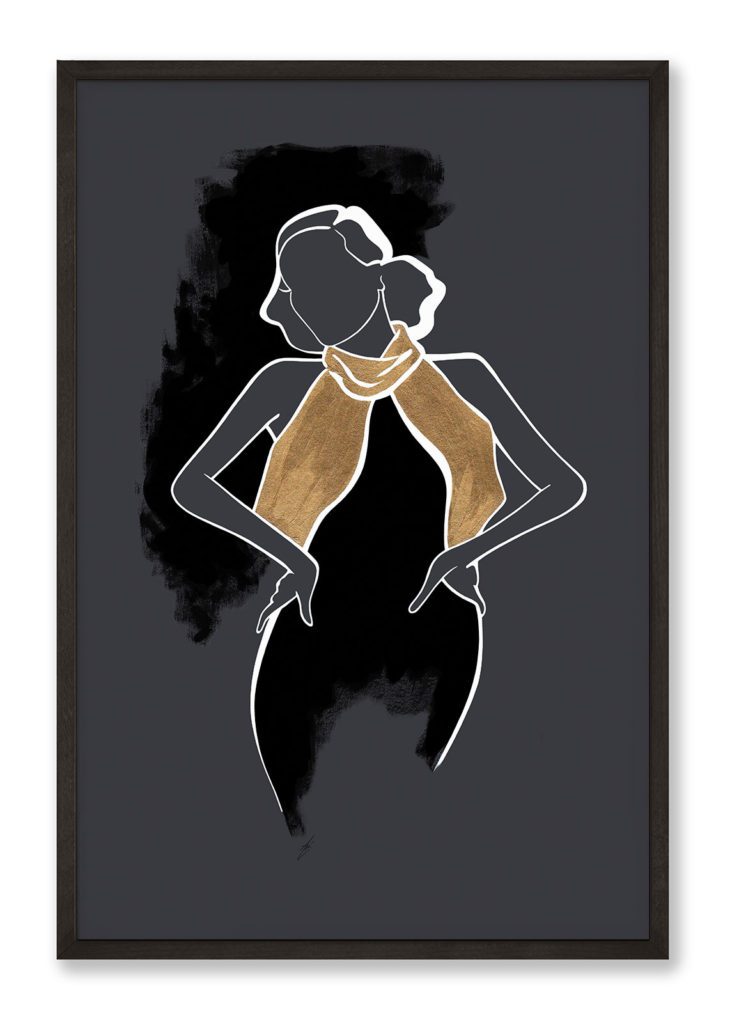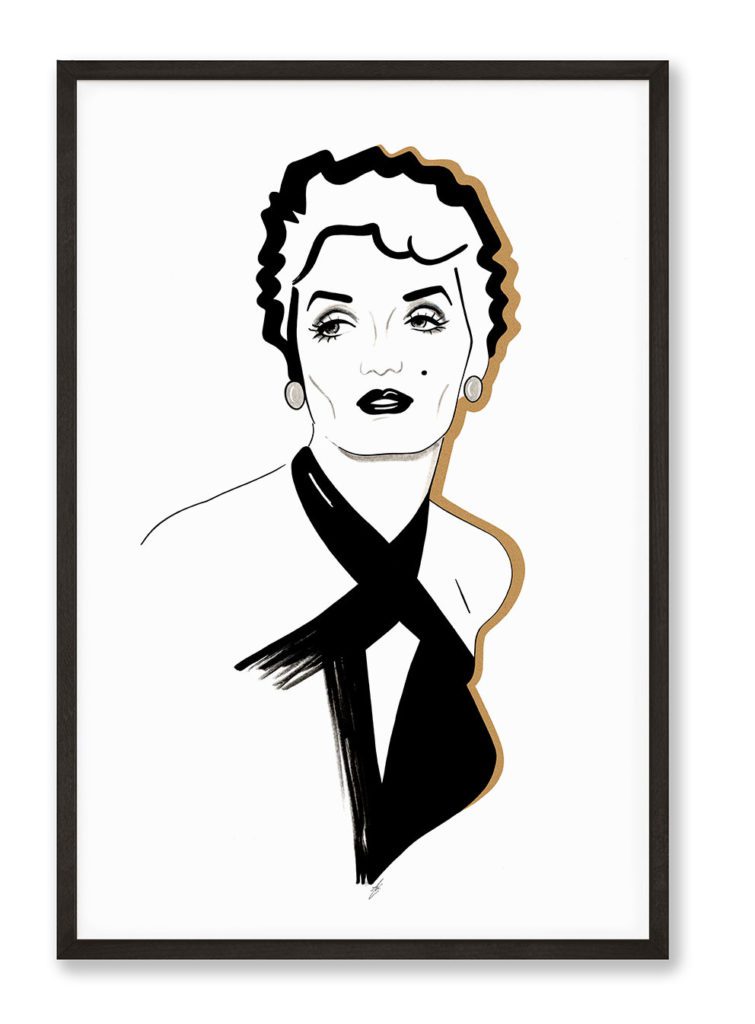Theda Bara
Old Hollywood’s Champ Vamp




Hi, I'm Kat!
What I am most passionate about is to inspire you to see that your life is your own and biggest masterpiece.
Theda Bara is a lot of things
- One of the three pairs of eyes of the Chicago International Film Festival Logo
- She was the first vamp in history and created this type of woman
- She starred in the two most expensive and lavish productions of the silent film era
- She is the one who essentially created Fox Studios with her work
- She was the first sex symbols of the film era
- She donned the most revealing costumes of Old Hollywood
LISTEN TO THE PODCAST
SUBSCRIBE TO THE PODCAST
Theda Bara’s upbringing
She was born Theodosia Burr Goodman on July 29, 1885 to a Jewish family of Polish and Swiss origin. Both her parents worked and with these two incomes, they were able to provide a comfortable middle class upbringing for their three kids, with Theodosia being the oldest. She was called Teddy during her childhood years and proved to be a surprising and mischievous child that always wanted to be the centre of attention. She especially loved to play the „Dirty-faced brat“. What she did from an early age on was to observe other people, their mimics, their poses, their behavior and stored it for further reference. Something that she also studied early on was the school of exaggerated reciting. It Around the turn of the century, it was quite common to recite poems and there were even handy books that elaborated on how to convey the emotions of a poem or play through exaggerated body language. That is exactly what Thedosia or Theda would later refer to when performing. She actually attended high school and even the University of Cincinnati for two years. As film historian XXX puts it: Theda Bara had a very normal upbringing and very good education compared to many other movie stars we know of. And for a girl back then, it was quite common to leave university after one or two years. Theda had found her love for acting and wanted to pursue it. First, in local theatre productions, then she moved to New York – the centre of the theatre and movie scene. She was 23 years old at that time.
Start in theatre
She made her Broadway debut in „The Devil“ and her work was well-received. She was acting then under her mother’s maiden name, which was de Coppet and changed it to de Cappet. So, it was Theodosia de Cappet billed on the theatre’s publicity material. This was also the time when she started to get interested in mysticism and spiritualism. When she toured the play „The Quaker Girl“ together with Hedda Hopper, the latter would later reminisce that Bara would go on and on and on about spirtitualism and the mystic that Hopper would eventually start hearing things. Hedda Hopper actually would become a lifelong friend of Bara’s – but she never did think much of her acting. Bara toured the country with several plays and it would take nine long years of theatre acting – from 1905 starting with local productions for three years and six more years in New York – until 1914. It was only then that she started her movie career on the East Coast, when she got a role as an extra in „The Stain“, which was directed by director Frank Powell.
Fox Studios & Birth of a Vamp
It all began in 1896, when Philip Burne-Jones published a painting called „The Vampire“ and his uncle, Rudyard Kipling, wrote a poem which was called „A fool there was“. Both were exhibited that year and became part of common cultural knowledge – everybody knew the painting, everybody could recite the poem. The painting shows a dark, beautiful woman with a wicked smile leaning over an unconcious man in bed with. Apparently, it is believed that this woman is Mrs. Patrick Campbell leaning over George Bernard Shaw after having conquered and depleted him.
We have to dial into what this vampire means in the cultural reception to understand. So, in American society and culture, social Darwinism had found its roots. It was believed that only the fittest would survive. It was also believed that the vital essence of life was stored in the male genitals and that sex would make men dumber and would rot their brain because they would spread their vitality thin and not be left with much. In the cultural context, it was also believed that men as they age would become more focused on the mind and the logic of things, whereas women would have no particular feeling of self, but be faithful and obedient housewives. In the painting and the poem, the woman is the vampire, who uses man’s vital essence up, exhausts them and uses them up. TIhe idea of the predatory female was also becoming more prominent because women were spreading out into the real world and into the workforce. And many a man felt threatened by them. So these trains of thoughts made William Fox decide to make a movie out of this plot. He asked director Frank Powell, who worked for Fox and directed „The Stain“ who he would suggest for the role of the vampire. And he suggested Theda.
In the movie, Theda Bara as the vampire, seduces a married husband and father and they are just living the good life. It is the story of the weak-willed man who cannot defend himself against this predatory sexual woman, the struggle of civilization, the end of civilization if she wins.
The man gets weaker and weaker, depleted of his vital essence. His dutiful and faithful wife wants to take him back while the vampire is out, but the vampire returns. She kisses him one last time – she essentially draws the last drop of vitality out of the husband. This seductress is threat to masculinity and the male ego. Because if you usually steal and harm, there is retribution, but in this case there isn’t.
William Fox really was a fox – he was sly and cunning. He turned down many more known actresses and wanted an unknown for this role. He wanted someone he could do great publicity with – and Thedosia Goodman was perfect for this. He put her under contract and some of the clauses in it were:
- You cannot marry within three years
- You must be heavily veiled when in public
- You cannot use public transport
- You cannot appear in the theatre
- You cannot attend Turkish baths
- You cannot close the windows in your limousine
- You cannot pose for staff shots
- You can only go out at night
He hired two journalists who regularly freelanced for him and challenged them to come up with a good name and a good story. Because he knew that he had to do lots of publicity around this movie. It was just the right material for this time and unknown Theodosia was just the perfect fit for the role with her large hungry eyes.
And, boy, what a story they came up with!
They shortened her name Theodosia to Theda and used Bara as a surname, apparently because she mentioned that she a relative named Baranger. They also gave her a whole new life story. Gone was Theodosia Burr Goodman from middle-class Ohio, and born was Theda Bara, daughter of an Arabian and a French sculptor that was born in the shadow of the Sphinx in Egypt. Her mother and her had to escape to France where she had learned acting on stage and had become a famous star. During the press conference that announced „A fool there was“ and Theda Bara as the leading lady with a dark and romantic past, Theda did not say anything, but sat there, looking mysterious and romantic. Actually, later on, her whole family changed their name to „Bara“
Film critic and gossip girl Louella Parsons also attended the press conference and later recounted that after the official end, Theda got up, opened the windows and exclaimed in a thick mid-western accent „Give me some air!“ From the beginning it was clear that it was a legend. Everybody knew it was a joke – and that was kind of the allure of it.
That very year, in 1915, „vamp“ got into the dictionary for the first time – as a noun, a verb and an adjective. And that was because of the character, the vampire, the vamp, Theda Bars played on screen.
Everybody was crazy about this movie, everybody knew it and Theda Bara was an instant star.
By the end of her first year at Fox, she had starred in 10 movies, in 9 of them versions of the original vamp. Theda Bara became Fox’s most successful star. Although Theda Bara actually was an accomplished actress and had paid her dues on the stage for nine long years to get where she now was. She got tired of being a vamp over and over again. Although the vamp did change – she became the „striving“ woman seeking sexual and intellectual fulfillment. But she is primitive in nature and when betrayed will seek revenge on men
There was again the underlying belief that men would become more and more intellectual with age, and more focused on life of the brain, whereas women would become more and more passive, more focused on simply existing, a household nun.
This predatory woman, this vamp, was supposed to be a cautionary tale – but people found it absolutely tintillating – roughly 182 million had seen her 11 movies combined. Theda became the international camp vamp – Russian, Mexican, modern American vamp, but this time, driven by fate
Diversification of Theda Bara’s roles
Director Frank Powell was replaced by Ralph Walsh and then by J. Gordon-Edwards – Theda and Gordon-Edwards became the new Theda unit.
For a change, she filmed „Under two flags“, in which she was wearing trousers and did not appear as a vamp. Critics said this should be the kind of movie Theda should do.
She also tried her hand at Shakespeare’s Romeo & Juliet (when she was 21 years old already) and then four other classic roles:
- Victor Hugo’s „Esmeralda“ in the The Darling of Paris, loosely base don the hunchback of Notre Dame
- Madame aux Camelies
- Madame du Barry
- Cleopatra
Cleopatra & Theda Bara’s height of fame
Theda Bara’s version is actually one of the most sought after films of the „lost films“. This movie along with almost all of Fox has been destroyed in the Fox Vault fire of 1937 – but there are so many stills available that one can easily recreate the whole movie, the costumes and the set design.
For this particular movie the Fox PR department has kept the best for last. They probably knew early on that Theda Bara was an anagram for Arab Death, but had saved it for the promotion of Cleopatra. For the filming of the movie, Theda would have to leave NY to LA, where a new studio was opened by Fox. Cleopatra was Fox’s biggest production to date and Theda Bara was dressed in 50 distinctively different costumes – most of which could be described as „barely there“. She said about herself: „I’ve gotten over being self-conscious about my costumes.“
The son of her co-star, Fritz Leiber who played Julius Cesar, Fritz Leiber jr. described Theda Bara as really nice. She was nice to colored people. He noted that there was nothing special about her voice and that he could tell that she had no elocution lessons. And he recounted that he was impressed by her dark brown eyes, they seemed dark and hungry. He llater wrote a story called „ The woman with the hungry eyes“ and he was inspired to this by none other than Theda Bara. Cleopatra cost almost 300.000$ and ran for almost two years. One critic said about her performance: When she was not repulsive, she was funny.
Madame du Barry apparently was her favourite movie probably because of the costumes by „George James Hopkins“. He would become her protege-
During that time, Theda Bara made a new movie approx. every 7 weeks, earned about 3000/week. She actually wanted vacation and stepped away but Fox did not let her. Instead he handed her more role. But what once seemed bold, became repetition. Still, her movies proved to be solid hits.
Theda Bara actually scripted a movie called „The soul of Buddha“, loosely based on Mata Hair’s story, but it was not well reserved
And then another Theda Bara Super Production was in the works: Salome
George Hopkins did the costumes again and the reviews surpassed those of Cleopatra. Salome actually is believed to be Theda Bara’s masterpiece – it was a way better production, she was more beautiful and it was better received than Cleopatra.
Then, her contract with Fox was about to expire and the news were wildly guessing whether Bara would stay at Fox or not. There were just a couple of movies she was supposed to film – and then Bara and Edwards split. Bara was teamed up with new directors for the rest of her contract. And in 1919, she stopped caring, she stopped giving 100%, Fox had exploited her. Theda Bara has practically made Fox, but when her image did not bring in any more money, he threw her away.
The love of her life
In 1921, Theda Bara wed Charles Brabin.
Theda Bara had actually made 39 films in 56 months for Fox and now went on vacation to Europe to consider her future. When she came back, she went to Broadway – all the way back!
Broadway producer: The Blue Flame. It was actually a take on Frankenstein in the sense of that a woman is reborn but her soul is not. It was the campiest thing before camp was actually thing. She had negotiated 1500$/week plus half of the wins. And that proved a financial success, but unfortunately, a professional demise.
In 1922, David O Selznick wanted to sign Theda Bara, he was looking for something special, not only a vamp and seemed to be a great fit for Theda. But, unfortunately, Selznick had a stroke and all plans were cast aside.
In the meantime, Charles Brabin had been tasked to film Ben Her, but the movie went over budget before filming had even begun – and Brabin was fired. That’s why Theda Bara decided
to make a film „The unchastened woman“ and then „Madame Mystery“, a comedy with Hal Roach as part of a 2-picture deal. She found it so horrific, that she did not make another movie – instead her extra scenes were used for the second movie of this contract.
This concluded her career and, from then onwards, she lived happily ever after in Beverly Hllls and never did another movie again. She was in 44 pictures – but never spoke a word on the screen. So, it was a sensation, when audiences could finally hear Theda Bara on a radio show in 1930.
Theda Bara’s cultural influence
Theda Bara is the first actress who would coin a new term for the dictionary
Her smokey eyes with Kohl from the Arabs was the precedent to any smokey eye in makeup history for femme fatales and sexually predatory women
She was actually freeing women, showing them an alternative to being a passive and obedient household nun.
Theda Bara definitely was the first mainstream femme fatale that destroyed men and all the movies afterwards copied her in one way or another
Lessons and Impact
- Determination is the single most important ingredient to achieving one’s goals or success
- Beauty standards vary
- You can go against convention, you can create a persona that is every grain what society does not want and succeed
- Never let anyone trample all over you – stand up for your right and never sell out
With all my love!
xx






